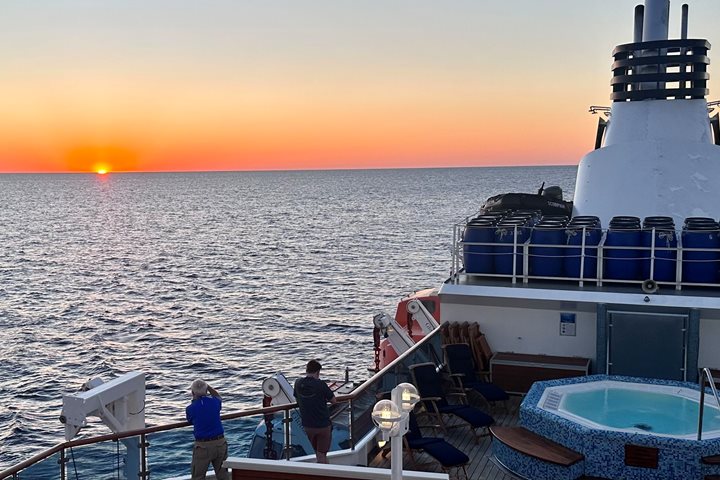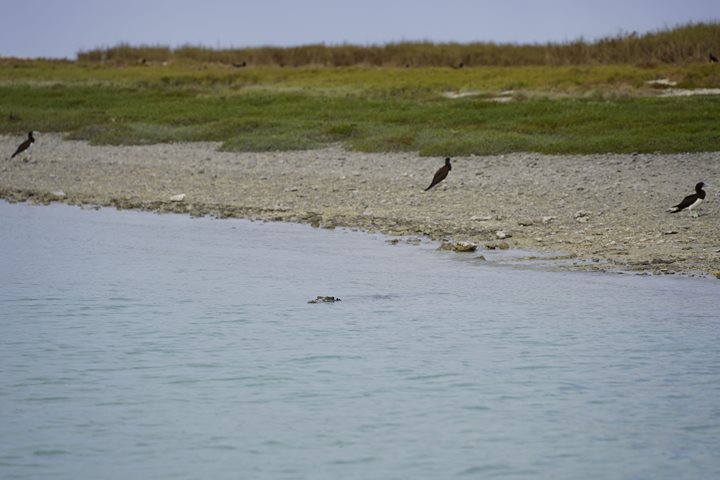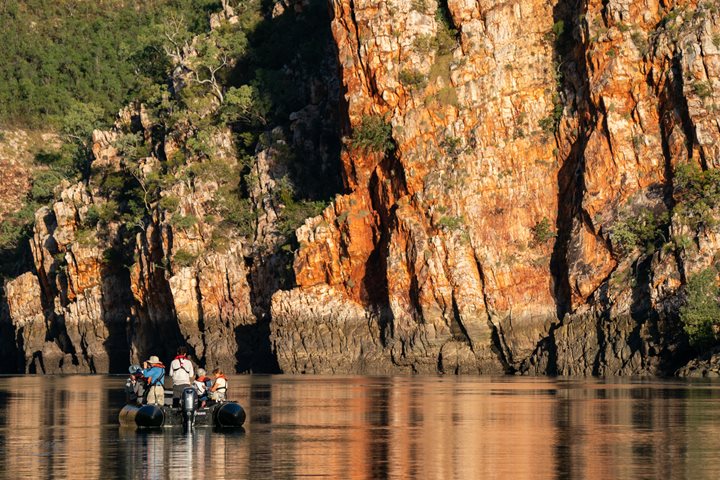Not much thrives here in the Kimberley region. Rather, life has to find a way to survive a hostile climate. At noon, the sun beats down with such a fury that one can almost feel the weight of the photons on one’s shoulders. Rain is so scarce that the plants of the mangroves have learned to live knee deep in the salt water rather than tough it out on the parched, dry rocks that dominate the landscape.
Huge tidal ranges create a temporary, yet scheduled, bounty for critters that are adapted to forage near shallows and mudflats. Eastern reef egrets, common sandpipers and sooty oystercatchers eagerly patrol the estuaries as the falling tides expose a muddy feast of invertebrates and small fish. Crested terns hover close to the waves while osprey orbit higher up, peering into the silty shallows for food. Indeed, there seems to be more life on or below the water than on land, perhaps evolution will favor those who live near the cooler waters.
There is one animal that is so well adapted to life in the Kimberley that its evolution was complete millions of years ago. A creature so perfect for a habitat with a climate that tends to push life to live near the water’s edges, in muddy streams, mangroves and sandy beaches. Birds, fish, invertebrates and mammals all gather in the exact place the salt water crocodile has evolved to the rank of apex predator.
Hunter River is a perfect habitat to find “Salties” in the afternoon’s falling tide. Fish are drained down out of the mangroves in tiny rivulets, fleeing the falling tide that mean a death sentence for those who don’t make it to the main river. As the currents build in speed, it signals the salt water crocodiles to move to the base of the streams, where they expend very little energy picking off the passing fish. Wading birds and passing mud crabs round out the evening diet.
As the Zodiacs leave Hunter River, the sun sets and a full moon rises to our east, another perfect Kimberley day comes to a close.







